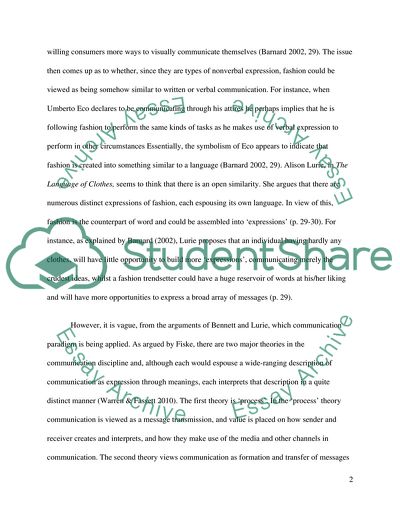Cite this document
(Fashion as a Visual Expression: The Nuances of Femininity Case Study, n.d.)
Fashion as a Visual Expression: The Nuances of Femininity Case Study. Retrieved from https://studentshare.org/gender-sexual-studies/1590626-femininity-feminism-the-beauty-myth
Fashion as a Visual Expression: The Nuances of Femininity Case Study. Retrieved from https://studentshare.org/gender-sexual-studies/1590626-femininity-feminism-the-beauty-myth
(Fashion As a Visual Expression: The Nuances of Femininity Case Study)
Fashion As a Visual Expression: The Nuances of Femininity Case Study. https://studentshare.org/gender-sexual-studies/1590626-femininity-feminism-the-beauty-myth.
Fashion As a Visual Expression: The Nuances of Femininity Case Study. https://studentshare.org/gender-sexual-studies/1590626-femininity-feminism-the-beauty-myth.
“Fashion As a Visual Expression: The Nuances of Femininity Case Study”. https://studentshare.org/gender-sexual-studies/1590626-femininity-feminism-the-beauty-myth.


